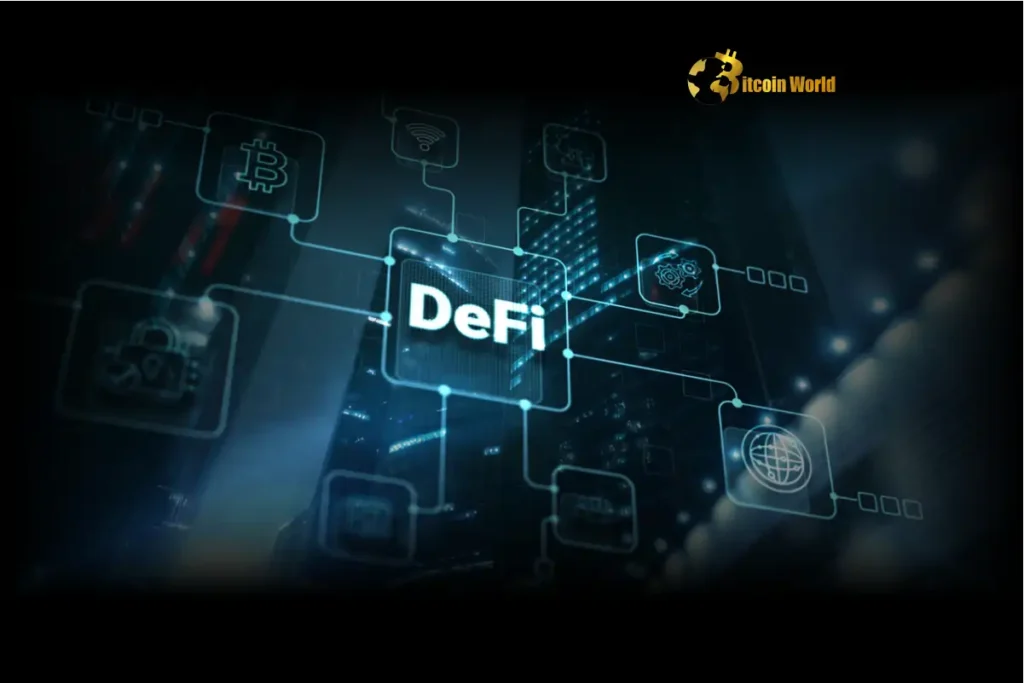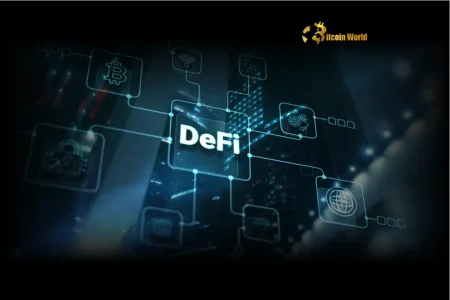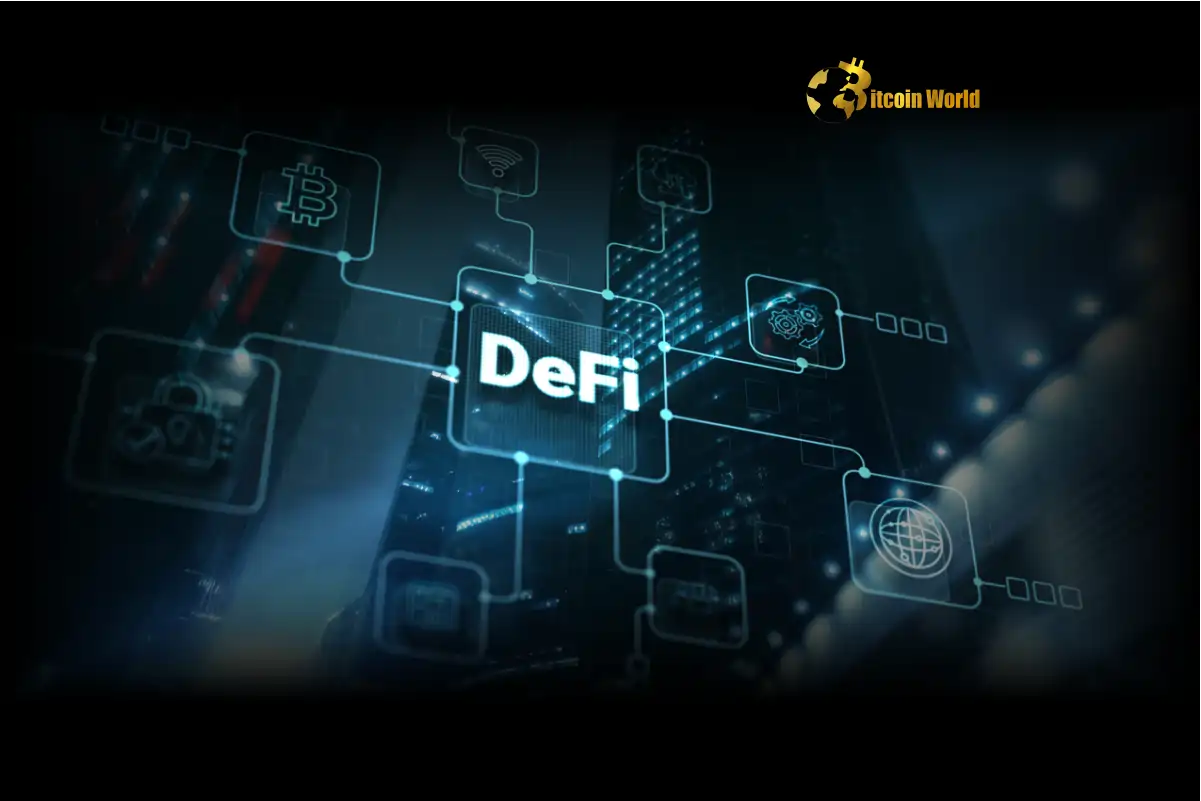DeFi’s Explosive Growth: Will Decentralized Finance Revolutionize Traditional Finance?

BitcoinWorld
DeFi’s Explosive Growth: Will Decentralized Finance Revolutionize Traditional Finance?
Have you heard the buzz around DeFi? It’s not just a trend; it’s a rapidly evolving ecosystem that’s reshaping how we think about money and financial services. Decentralized Finance, or DeFi, is built on blockchain technology, aiming to recreate traditional financial systems like lending, borrowing, and trading using smart contracts.
The potential for DeFi is immense, promising greater accessibility, transparency, and efficiency compared to legacy systems. But what exactly is driving this growth, and what does it mean for the future of finance?
Understanding the Core of Decentralized Finance (DeFi)
At its heart, Decentralized Finance seeks to remove intermediaries – like banks and brokers – from financial transactions. Instead, operations are governed by code on a blockchain, primarily Ethereum, though other networks are emerging. This allows for peer-to-peer interactions, enabling anyone with an internet connection to participate.
Think about it: sending money globally, taking out a loan, or earning interest on your savings could potentially be done directly, without needing approval from a central authority. This accessibility is a major draw, especially for the unbanked or underbanked population worldwide.
Key components of the DeFi ecosystem include:
Decentralized Exchanges (DEXs): Platforms for trading crypto assets directly between users.
Lending Protocols: Allowing users to lend out crypto for interest or borrow crypto by providing collateral. This is where Crypto Lending shines.
Yield Farming: Earning rewards (often new tokens) by staking or locking up crypto assets in DeFi protocols. This strategy, known as Yield Farming, has become very popular.
Stablecoins: Cryptocurrencies pegged to stable assets like the US dollar, crucial for reducing volatility within the DeFi ecosystem.
Asset Management Protocols: Tools and platforms for managing decentralized portfolios.
Why is Crypto Lending Gaining Traction?
Crypto Lending has become a cornerstone of DeFi, offering alternatives to traditional banking loans and savings accounts. Users can deposit their crypto assets into lending pools and earn interest, often at rates significantly higher than those offered by traditional banks. Conversely, borrowers can access funds by locking up their own crypto as collateral.
The process is typically automated via smart contracts, which handle the terms, collateralization, and liquidation if necessary. This transparency and efficiency are key benefits. For lenders, it’s a way to generate passive income on their crypto holdings. For borrowers, it can offer quick access to liquidity without selling their assets, although the risks, especially around volatile collateral, must be carefully considered.
The Allure and Risks of Yield Farming
Yield Farming is perhaps one of the most complex, yet potentially rewarding, activities in DeFi. It involves users depositing their crypto into various DeFi protocols to earn rewards, often in the form of governance tokens for that protocol. These rewards can then be sold or reinvested, creating a compounding effect.
The allure is high Annual Percentage Yields (APYs) or Annual Percentage Rates (APRs) advertised by protocols. However, Yield Farming comes with significant risks, including:
Smart Contract Risk: Bugs or vulnerabilities in the code can lead to loss of funds.
Impermanent Loss: A risk faced by liquidity providers in DEXs where the price of deposited assets changes relative to each other, potentially resulting in a loss compared to simply holding the assets.
Liquidation Risk: If the value of borrowed collateral falls below a certain threshold, it can be automatically sold off.
Rug Pulls: Malicious actors creating protocols that steal deposited funds.
Complexity: Understanding the various strategies and protocols requires significant technical knowledge.
Despite the risks, the potential for high returns continues to attract users to Yield Farming, driving innovation and liquidity within the DeFi space.
DeFi vs. Traditional Finance: A Showdown?
The rise of DeFi naturally brings up comparisons with Traditional Finance. While DeFi is still nascent compared to the centuries-old banking system, it offers a glimpse into a potentially different future. Here’s a quick comparison:
Feature
Decentralized Finance (DeFi)
Traditional Finance (TradFi)
Intermediaries
Minimal (Smart Contracts)
Centralized (Banks, Brokers)
Accessibility
Global, Permissionless (Internet needed)
Often Requires Accounts, ID, Credit Checks
Transparency
High (Transactions on Public Ledger)
Limited (Internal Bank Records)
Operating Hours
24/7
Business Hours
Transaction Speed
Can be Fast (Blockchain dependent)
Can be Slow (Especially Cross-border)
Custody of Assets
User Controlled (Self-custody)
Third-party Controlled (Bank holds funds)
Regulation
Evolving and Often Unclear
Well-established and Strict
User Experience
Can be Complex
Generally User-friendly
DeFi’s strengths lie in its accessibility, transparency, and always-on nature. However, Traditional Finance benefits from established regulation, insurance (like FDIC), and a generally more user-friendly experience for the average person. The question isn’t necessarily which will ‘win’, but how they might coexist or influence each other.
Challenges and the Road Ahead for DeFi
Despite the excitement, DeFi faces significant hurdles. Regulatory uncertainty is a major challenge, with governments worldwide still figuring out how to classify and govern these new systems. Security risks, as highlighted by numerous hacks and exploits, remain a concern. The complexity of using DeFi protocols is also a barrier for mainstream adoption.
Furthermore, scalability issues on blockchains like Ethereum can lead to high transaction fees and slow speeds, though layer 2 solutions and competing blockchains are working to address this. Consumer protection mechanisms, like those in Traditional Finance, are largely absent in DeFi, placing the onus entirely on the user.
Actionable Insights for Exploring DeFi
Interested in dipping your toes into the world of Decentralized Finance? Here are a few tips:
Do Your Research: Understand the specific protocol you plan to use. Don’t invest based on hype alone.
Start Small: Don’t commit significant capital until you are comfortable with the technology and risks.
Understand the Risks: Be aware of potential smart contract bugs, impermanent loss in Yield Farming, and liquidation risks in Crypto Lending.
Use Reputable Platforms: Stick to well-established protocols with a proven track record, though even these carry risk.
Secure Your Wallet: Practice strong security habits for your private keys and seed phrases.
Stay Informed: The DeFi space moves fast. Keep up with news and developments.
Engaging with DeFi can be rewarding, offering new ways to manage and grow assets, but it requires diligence and a clear understanding of the underlying technology and associated risks.
The Transformative Power of DeFi
In conclusion, Decentralized Finance (DeFi) represents a powerful shift towards open, permissionless financial systems. Driven by innovations in Crypto Lending and strategies like Yield Farming, it offers compelling alternatives to aspects of Traditional Finance.
While significant challenges around regulation, security, and usability persist, the ongoing development and growing adoption of DeFi signal its potential to not just complement, but perhaps fundamentally transform the global financial landscape. It’s a space worth watching closely, as it continues to build the financial infrastructure of the future, one block at a time.
To learn more about the latest DeFi trends, explore our article on key developments shaping Decentralized Finance institutional adoption.
This post DeFi’s Explosive Growth: Will Decentralized Finance Revolutionize Traditional Finance? first appeared on BitcoinWorld and is written by Editorial Team











